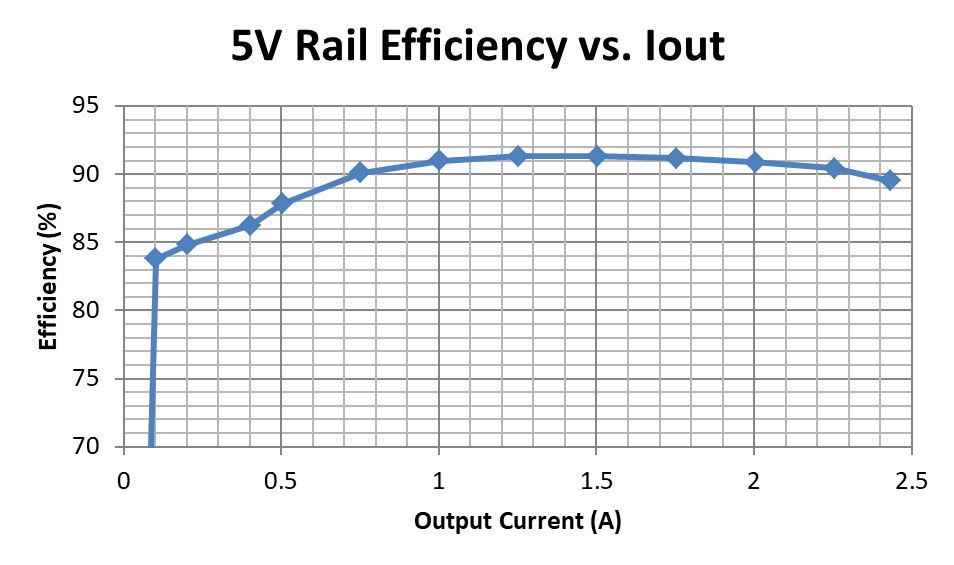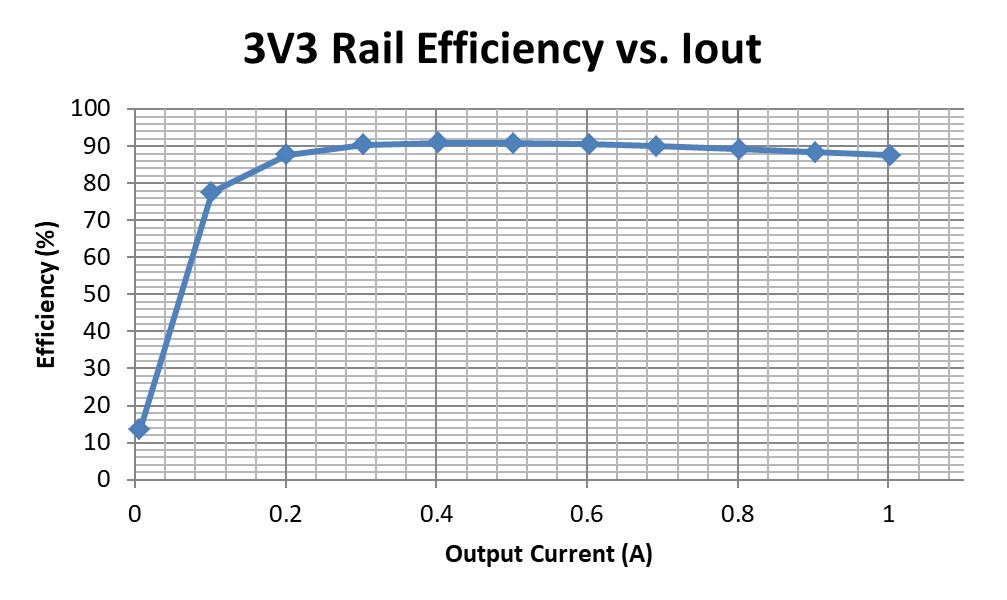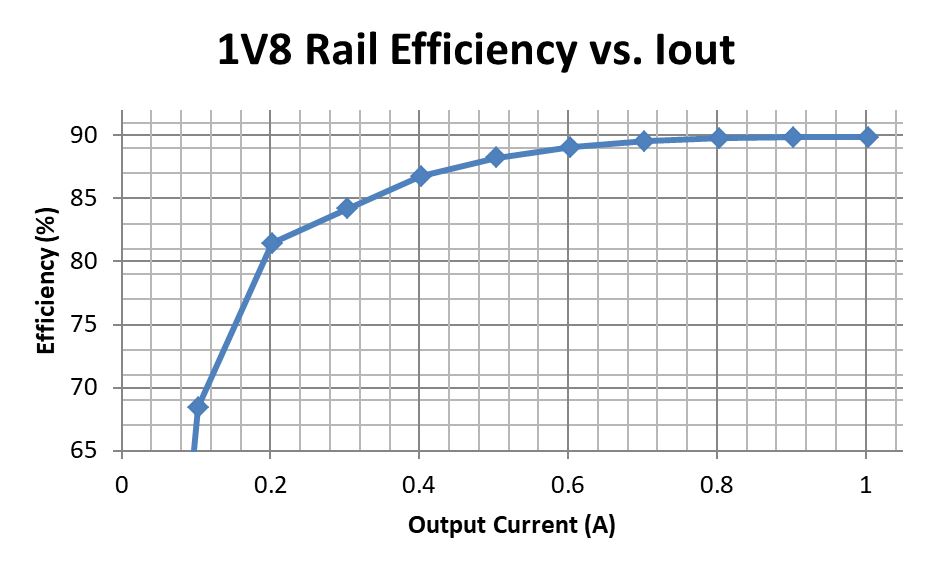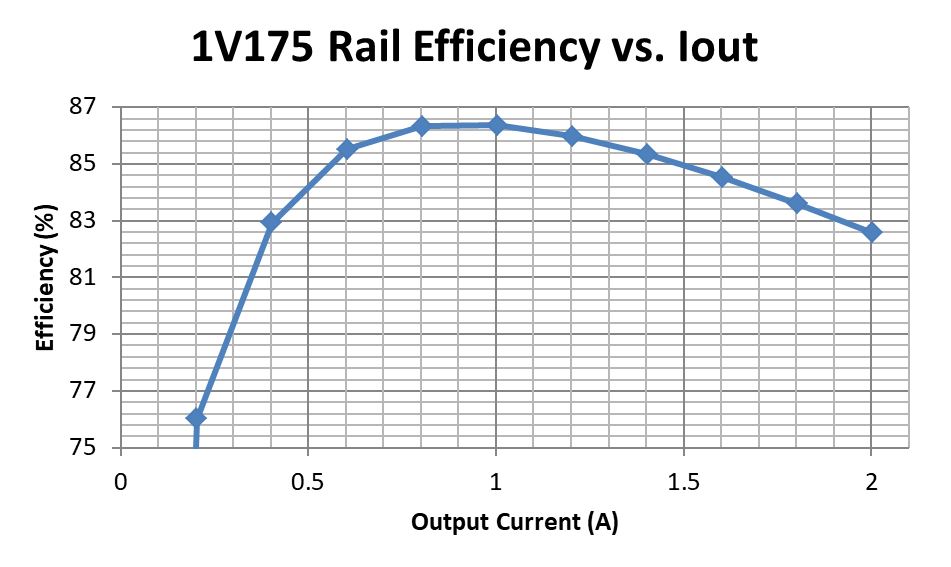TIDT205 February 2021
3.1 Efficiency Graphs
 Figure 3-1 Efficiency vs IOUT
(5-V Output).
Figure 3-1 Efficiency vs IOUT
(5-V Output).
Efficiency was taken with the converter operating with 13.5-V input, 5-V output. The input supply was connected directly at the input of the converter. All other converters on the board were disabled. Peak efficiency is over 91%.
 Figure 3-2 Efficiency vs IOUT
(3.3-V Output – DC/DC).
Figure 3-2 Efficiency vs IOUT
(3.3-V Output – DC/DC).
Efficiency was taken with the converter operating with 5-V input, 3.3-V output. The input supply was connected directly at the input of the converter. All other converters on the board were disabled. Peak efficiency is over 90%.
 Figure 3-3 Efficiency vs IOUT
(1.8-V Output).
Figure 3-3 Efficiency vs IOUT
(1.8-V Output).
Efficiency was taken with the converter operating with 5-V input, 1.8-V output. The input supply was connected directly at the input of the converter. All other converters on the board were disabled. Peak efficiency is over 89%.
 Figure 3-4 Efficiency vs IOUT
(1.35-V Output).
Figure 3-4 Efficiency vs IOUT
(1.35-V Output).
Efficiency was taken with the converter operating with 5-V input, 1.35-V output. The input supply was connected directly at the input of the converter. All other converters on the board were disabled. Peak efficiency is over 88%.
 Figure 3-5 Efficiency vs IOUT
(1.175-V Output).
Figure 3-5 Efficiency vs IOUT
(1.175-V Output).
Efficiency was taken with the converter operating with 5-V input, 1.175-V output. The input supply was connected directly at the input of the converter. All other converters on the board were disabled. Peak efficiency is over 86%.